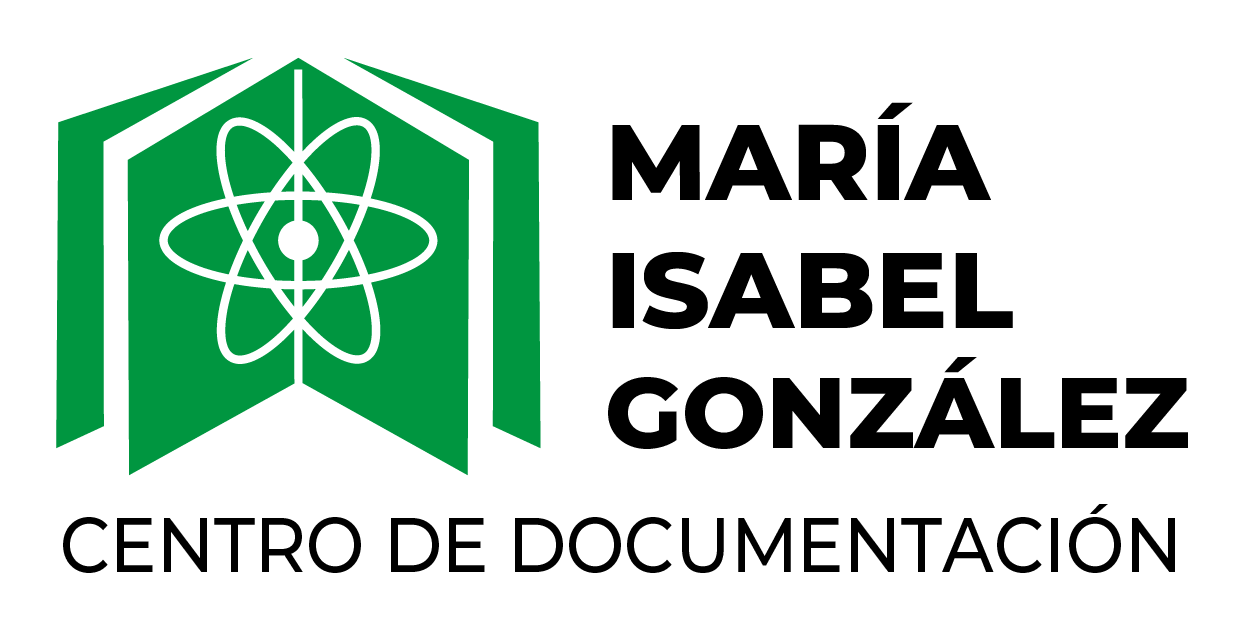Propiedades mecánicas de la aleación ferrítica Fe76Al12V12 endurecida por precipitación coherente Fe2AlV (L2 sub1).
Ferreirós, Pedro Antonio
Propiedades mecánicas de la aleación ferrítica Fe76Al12V12 endurecida por precipitación coherente Fe2AlV (L2 sub1). Mechanical properties of Fe76Al12V12 ferritic alloy hardened by Fe2AlV (L2 sub1) coherent precipitation. - 2016. - 120 p.
Cantidad de ejemplares: 1
Tesis para optar al título de Doctor en Ciencia y Tecnología de Materiales, mención Materiales. Director/es: Rubiolo, Gerardo H.; Alonso, Paula R.
El incremento de la resistencia a través de una distribución homogénea de una segunda fase de tamaño nanométrico es un concepto propuesto para fortalecer una solución sólida cúbica centrada en el cuerpo de hierro para aplicaciones de alta temperatura en centrales de energía eléctrica (combustible fósil ó nuclear). Se demostró que estas microestructuras pueden ser obtenidas en el sistema Fe-Al-V con precipitados de fase ordenada L2 sub 1 y composición Fe2AlV sobre una matriz ferrítica. El efecto del envejecimiento en el rango de 600 a 700 °C en la aleación ferrítica Fe76Al12V12 se investigó por microdureza y microscopía electrónica de transmisión. La teoría de engrosamiento por longitud de difusión apantallada se utiliza para analizar la cinética de maduración. Considerando la fracción en volumen y movilidad de los componentes en la aleación ternaria, se determinó la energía de interfaz entre la matriz y precipitados como (18 +- 3) x10 supra -3 J/m2 a 700 °C, aumentando fuertemente al disminuir la temperatura. Un clásico comportamiento en el incremento de resistencia por precipitación fue observado a lo largo del tiempo a distintas temperaturas de envejecimiento. Los precipitados coherentes Fe2AlV presentaron a temperatura ambiente un máximo incremento de la tensión crítica resuelta de corte de la matriz ferrítica en aproximadamente 450 MPa. El pico de endurecimiento fue obtenido para un radio promedio de precipitado de 10 nm aproximadamente. Concordancia cuantitativa fue encontrada con valores de resistencia pronosticados a partir de la teoría de endurecimiento por orden, prediciendo que la resistencia está controlada por un mecanismo de corte de precipitados para tamaños alrededor del pico de endurecimiento, y el mecanismo de Orowan de sobrepaso de dislocaciones sin corte de precipitados para tamaños mayores. Se estimó que la energía de límites de dominios de antifase (gamma APB) del precipitado Fe2AlV es (27 +- 4) x10 supra -2 J/m2. Aspectos importantes del comportamiento mecánico en alta temperatura de la aleación Fe76Al12V12 previamente envejecida a 700 °C hasta el endurecimiento máximo fueron investigados. La temperatura de transición dúctil frágil de la aleación fue registrada a 617 °C, utilizando ensayos de impacto Charpy con un dispositivo innovador de calentamiento In-situ. La tensión de fluencia a temperatura de trabajo fue caracterizada por ensayos de compresión en caliente en una máquina Gleeble a velocidad de deformación epsilon = 5 x10 supra -4 s supra -1, los valores obtenidos son 815 y 592 MPa a 600 y 650 °C respectivamente. Adicionalmente, con el objetivo de buscar condiciones óptimas para el refinamiento de grano en la aleación Fe76Al12V12, se caracterizó el comportamiento de la deformación en caliente bajo condiciones de compresión a 900 °C y velocidades de deformación en el rango 1-60 s supra -1. El cambio del mecanismo de recristalización dinámica continua a discontinua ocurre entre las velocidades 1 y 30 s supra -1. Finalmente, con el fin de aumentar el rango de temperatura para aplicaciones estructurales de la aleación Fe76Al12V12; se investigó el potencial de la micro-aleación con Ti para aumentar la temperatura de equilibrio del campo bifásico A2 + L2 sub 1. La temperatura de transformación de fase de mayor interés tecnológico A2+L2 sub 1 -> B2+L2 sub 1 (744 °C) sube levemente, 12 °C para la aleación Fe76Al12V9Ti3. Se identificaron importantes efectos secundarios, la adición de titanio incrementa la velocidad de engrosamiento de los precipitados, el desajuste de red cristalina entre matriz-precipitado y la capacidad de endurecimiento por precipitación coherente. El presente estudio logra una comprensión sistemática de la relación entre microestructura y propiedades mecánicas en aleaciones ferríticas reforzadas con Fe2AlV. Contribuye al conocimiento de los mecanismos básicos de estabilidad de fase y deformación en aleaciones reforzadas por precipitación coherente, y proporciona nuevas perspectivas sobre el desarrollo de nuevos materiales avanzados. Strengthening through a homogeneous distribution of a nano-sized second phase is a concept that is proposed to reinforce solid-solution body centered-cubic iron for high-temperature application in fossil or nuclear-energy power plants. It was shown that these microstructures can be obtained in the Fe-Al-V system with L2 sub1-ordered Fe2AlV precipitates in a ferritic matrix. The effect of aging in the range 600 to 700 °C on the ferritic Fe76Al12V12 alloy was investigated using micro-hardness test and transmission electron microscopy. The diffusion screening length coarsening theory is used to analyze the ripening kinetics. When volume fraction and mobility of the components in the ternary alloy are considered, the interfacial energy between the matrix and the precipitate was determined as (18 +- 3) x10 supra-3 J/m2 at 700 °C but increases strongly when the temperature decreases. A classic precipitation hardening behavior has been observed along the time for each aging treatment. At room temperature, the increment of critical resolved shear stress has a peak of about 450 MPa for a precipitate radius of 10 nm. Quantitative agreement is found with strength values predicted from order strengthening theory, predicting that strength is controlled by a precipitate shearing mechanism for sizes around that of peak strengthening, and the Orowan dislocation bypass mechanism for larger sizes. The APB energy of Fe2AlV precipitate was estimated to be (27 +- 4) x10 supra -2 J/m2. Main aspects of the high temperature mechanical behavior of the alloy Fe76Al12V12, earlier aged at 700 °C until the maximum hardening, were investigated. The brittle ductile transition temperature of the alloy was recorded at 617 °C by using a Charpy impact tester provided with an innovative in-situ heating device. The yield stress at working temperature was characterized by hot compression tests on a Gleeble machine at strain rate of Epsilon = 5 x10 supra -4 s supra-1, the values obtained are 815 and 592 MPa at 600 and 650 °C respectively. In addition, with the aim of finding optimum conditions for the grain refinement in the Fe76Al12V12 alloy, the deformation behavior under hot compression conditions was characterized at 900 °C and strain rate range 1-60 s supra -1. The change from continuous to discontinuous dynamic recrystallization mechanism occurs between strain rate 1 and 30 s supra -1. In order to increase the range of temperature for structural applications of the Fe76Al12V12 alloy, the potential of Ti micro alloying to increase the equilibrium temperature of the A2 + L2 sub 1 two phase field was investigated. The phase transformation temperature of major technological interest A2+L2 sub 1 -> B2+L2 sub 1 (744 °C) rises slightly, 12 °C for the alloy Fe76Al12V9Ti3. Significant side effects were identified; the addition of titanium increases the coarsening rate of precipitates, the crystal lattice matrix-precipitate misfit and the hardening ability of coherent precipitation. The present study achieves a systematical understanding of the microstructure mechanical properties relationship in Fe2AlV -strengthened ferritic alloys. It furthers our fundamental understanding of the phase stability and deformation mechanisms in precipitate-strengthened alloys, and provides new insights into developing new advanced materials.
Propiedades mecánicas de la aleación ferrítica Fe76Al12V12 endurecida por precipitación coherente Fe2AlV (L2 sub1). Mechanical properties of Fe76Al12V12 ferritic alloy hardened by Fe2AlV (L2 sub1) coherent precipitation. - 2016. - 120 p.
Cantidad de ejemplares: 1
Tesis para optar al título de Doctor en Ciencia y Tecnología de Materiales, mención Materiales. Director/es: Rubiolo, Gerardo H.; Alonso, Paula R.
El incremento de la resistencia a través de una distribución homogénea de una segunda fase de tamaño nanométrico es un concepto propuesto para fortalecer una solución sólida cúbica centrada en el cuerpo de hierro para aplicaciones de alta temperatura en centrales de energía eléctrica (combustible fósil ó nuclear). Se demostró que estas microestructuras pueden ser obtenidas en el sistema Fe-Al-V con precipitados de fase ordenada L2 sub 1 y composición Fe2AlV sobre una matriz ferrítica. El efecto del envejecimiento en el rango de 600 a 700 °C en la aleación ferrítica Fe76Al12V12 se investigó por microdureza y microscopía electrónica de transmisión. La teoría de engrosamiento por longitud de difusión apantallada se utiliza para analizar la cinética de maduración. Considerando la fracción en volumen y movilidad de los componentes en la aleación ternaria, se determinó la energía de interfaz entre la matriz y precipitados como (18 +- 3) x10 supra -3 J/m2 a 700 °C, aumentando fuertemente al disminuir la temperatura. Un clásico comportamiento en el incremento de resistencia por precipitación fue observado a lo largo del tiempo a distintas temperaturas de envejecimiento. Los precipitados coherentes Fe2AlV presentaron a temperatura ambiente un máximo incremento de la tensión crítica resuelta de corte de la matriz ferrítica en aproximadamente 450 MPa. El pico de endurecimiento fue obtenido para un radio promedio de precipitado de 10 nm aproximadamente. Concordancia cuantitativa fue encontrada con valores de resistencia pronosticados a partir de la teoría de endurecimiento por orden, prediciendo que la resistencia está controlada por un mecanismo de corte de precipitados para tamaños alrededor del pico de endurecimiento, y el mecanismo de Orowan de sobrepaso de dislocaciones sin corte de precipitados para tamaños mayores. Se estimó que la energía de límites de dominios de antifase (gamma APB) del precipitado Fe2AlV es (27 +- 4) x10 supra -2 J/m2. Aspectos importantes del comportamiento mecánico en alta temperatura de la aleación Fe76Al12V12 previamente envejecida a 700 °C hasta el endurecimiento máximo fueron investigados. La temperatura de transición dúctil frágil de la aleación fue registrada a 617 °C, utilizando ensayos de impacto Charpy con un dispositivo innovador de calentamiento In-situ. La tensión de fluencia a temperatura de trabajo fue caracterizada por ensayos de compresión en caliente en una máquina Gleeble a velocidad de deformación epsilon = 5 x10 supra -4 s supra -1, los valores obtenidos son 815 y 592 MPa a 600 y 650 °C respectivamente. Adicionalmente, con el objetivo de buscar condiciones óptimas para el refinamiento de grano en la aleación Fe76Al12V12, se caracterizó el comportamiento de la deformación en caliente bajo condiciones de compresión a 900 °C y velocidades de deformación en el rango 1-60 s supra -1. El cambio del mecanismo de recristalización dinámica continua a discontinua ocurre entre las velocidades 1 y 30 s supra -1. Finalmente, con el fin de aumentar el rango de temperatura para aplicaciones estructurales de la aleación Fe76Al12V12; se investigó el potencial de la micro-aleación con Ti para aumentar la temperatura de equilibrio del campo bifásico A2 + L2 sub 1. La temperatura de transformación de fase de mayor interés tecnológico A2+L2 sub 1 -> B2+L2 sub 1 (744 °C) sube levemente, 12 °C para la aleación Fe76Al12V9Ti3. Se identificaron importantes efectos secundarios, la adición de titanio incrementa la velocidad de engrosamiento de los precipitados, el desajuste de red cristalina entre matriz-precipitado y la capacidad de endurecimiento por precipitación coherente. El presente estudio logra una comprensión sistemática de la relación entre microestructura y propiedades mecánicas en aleaciones ferríticas reforzadas con Fe2AlV. Contribuye al conocimiento de los mecanismos básicos de estabilidad de fase y deformación en aleaciones reforzadas por precipitación coherente, y proporciona nuevas perspectivas sobre el desarrollo de nuevos materiales avanzados. Strengthening through a homogeneous distribution of a nano-sized second phase is a concept that is proposed to reinforce solid-solution body centered-cubic iron for high-temperature application in fossil or nuclear-energy power plants. It was shown that these microstructures can be obtained in the Fe-Al-V system with L2 sub1-ordered Fe2AlV precipitates in a ferritic matrix. The effect of aging in the range 600 to 700 °C on the ferritic Fe76Al12V12 alloy was investigated using micro-hardness test and transmission electron microscopy. The diffusion screening length coarsening theory is used to analyze the ripening kinetics. When volume fraction and mobility of the components in the ternary alloy are considered, the interfacial energy between the matrix and the precipitate was determined as (18 +- 3) x10 supra-3 J/m2 at 700 °C but increases strongly when the temperature decreases. A classic precipitation hardening behavior has been observed along the time for each aging treatment. At room temperature, the increment of critical resolved shear stress has a peak of about 450 MPa for a precipitate radius of 10 nm. Quantitative agreement is found with strength values predicted from order strengthening theory, predicting that strength is controlled by a precipitate shearing mechanism for sizes around that of peak strengthening, and the Orowan dislocation bypass mechanism for larger sizes. The APB energy of Fe2AlV precipitate was estimated to be (27 +- 4) x10 supra -2 J/m2. Main aspects of the high temperature mechanical behavior of the alloy Fe76Al12V12, earlier aged at 700 °C until the maximum hardening, were investigated. The brittle ductile transition temperature of the alloy was recorded at 617 °C by using a Charpy impact tester provided with an innovative in-situ heating device. The yield stress at working temperature was characterized by hot compression tests on a Gleeble machine at strain rate of Epsilon = 5 x10 supra -4 s supra-1, the values obtained are 815 and 592 MPa at 600 and 650 °C respectively. In addition, with the aim of finding optimum conditions for the grain refinement in the Fe76Al12V12 alloy, the deformation behavior under hot compression conditions was characterized at 900 °C and strain rate range 1-60 s supra -1. The change from continuous to discontinuous dynamic recrystallization mechanism occurs between strain rate 1 and 30 s supra -1. In order to increase the range of temperature for structural applications of the Fe76Al12V12 alloy, the potential of Ti micro alloying to increase the equilibrium temperature of the A2 + L2 sub 1 two phase field was investigated. The phase transformation temperature of major technological interest A2+L2 sub 1 -> B2+L2 sub 1 (744 °C) rises slightly, 12 °C for the alloy Fe76Al12V9Ti3. Significant side effects were identified; the addition of titanium increases the coarsening rate of precipitates, the crystal lattice matrix-precipitate misfit and the hardening ability of coherent precipitation. The present study achieves a systematical understanding of the microstructure mechanical properties relationship in Fe2AlV -strengthened ferritic alloys. It furthers our fundamental understanding of the phase stability and deformation mechanisms in precipitate-strengthened alloys, and provides new insights into developing new advanced materials.




